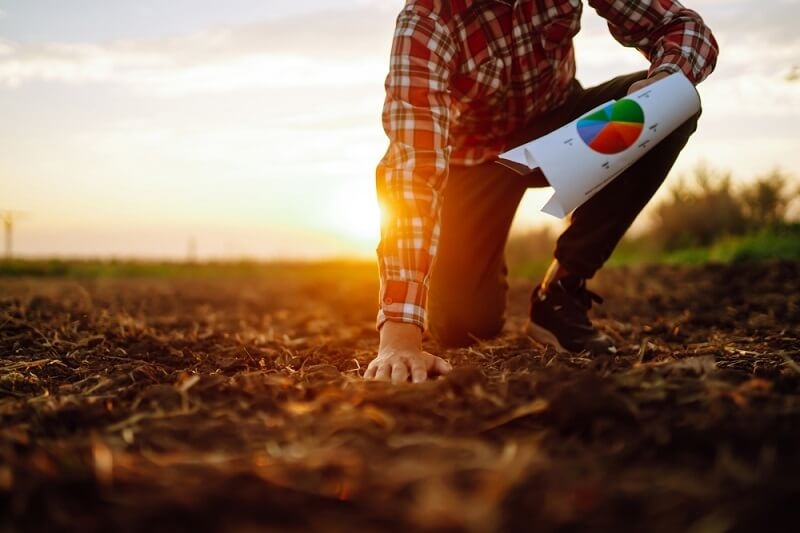
The foundation of a healthy garden starts below ground level—with healthy, prepared soil. Before planting, good soil preparation is the cornerstone of successful gardening, as it provides your seeds and plants with the necessary nutrients, structure, and moisture balance to grow vigorous and healthy plants. While it may seem like a daunting task for many beginner gardeners, understanding how to prepare soil for planting purposes is actually much simpler than you think.
Whether you have heavy clay soil or sandy patches in your garden, with a few intentional steps to prepare your soil, you can significantly enhance the quality of your plants' performance. As you read on, we will also discuss easy methods for testing your soil at home so that you can understand the benefits your soil needs.
Properly preparing your soil is the basis of any successful garden. The soil impacts the water retention, plant health, and nutrient absorption of plants. Without good soil, even the best seeds and fertilizers will struggle to thrive.
Well-prepared soil provides your plants with a great environment to thrive in, decreasing maintenance and improving the quality of yield.
Knowing how to prepare soil for planting properly is essential, whether you are planting a flower bed or a vegetable patch. Follow these steps to prepare the soil for healthy and good growing.
When cleaning, first remove all weeds, old roots, and debris. By removing unwanted plants, you remove those plants that would take up nutrients.
Use a garden fork, tiller, or any other means possible, and loosen the soil to a depth of 8 to 12 inches. Loosening the soil helps to aerate it and facilitates root penetration.
Perform an easy soil test at home using the pH test method to find out the pH level and nutrient balance of the soil. This will determine whether your soil is too acidic, alkaline, or not enough in essential elements.
Add compost, leaf mold, or aged or barnyard manure to add soil fortification.
After you have started mixing your amendments in, you need to level off the soil and put on a heavy load of water. This levels out the soil, and it is ready for planting or mulching.
Once you know how to prepare soil for planting, your garden becomes less dependent on chemical fertilizers and more organically sustainable and alive.

In Texas, many gardeners face the challenge of working with dense, sticky clay soil that holds water but doesn't allow for proper air exchange. However, with proper care and technique, it is possible to significantly improve clay soil in Dallas.
Some practical ways to improve clay-heavy soils:
Overall, if you follow these few steps, you will make improving clay soil in Dallas a far easier prospect, and your garden should thrive despite local soil conditions.
Composting is one of the simplest and most environmentally sustainable approaches to improve soil health. Here are a few easy tips for beginners that will provide you with helpful advice on composting your kitchen scraps and yard waste.
By following these tips, you can reduce waste and create a natural soil amendment that improves soil structure and increases fertility.
Organic soil amendments are essential for enhancing the health of gardens. They improve soil structure, favor the growth of beneficial microorganisms, and increase the nutrient content.
Popular organic amendments of soil additions are:
Organic soil amendments are also environmentally friendly, as they promote plant growth and maintain soil health in the long run. These materials are compatible with your soil, unlike chemical fertilizers, which can degrade the quality over time.
Before planting or adding fertilizers, performing an easy soil test at home can reveal exactly what your soil needs. Understanding its composition enables precise adjustments and improved results.
Simple home testing methods include:
With easy soil testing at home, you can make informed decisions about what amendments your garden needs for balanced, fertile soil.
Even the experienced growers may lose the partials of soil. The following mistakes should be avoided to improve the results:
The prevention of these traps will ensure that soil preparation is more effective, allowing plants to become stronger and healthier.
Successful gardens start with thoughtful soil preparation. Understanding how to prepare soil for planting, using organic soil amendments, and applying beginner composting tips ensures fertile, balanced soil that nurtures vigorous, vibrant plants. Whether you’re improving clay soil in Dallas or testing nutrients with easy soil testing at home, a little effort beneath the surface brings lasting rewards.
This content was created by AI